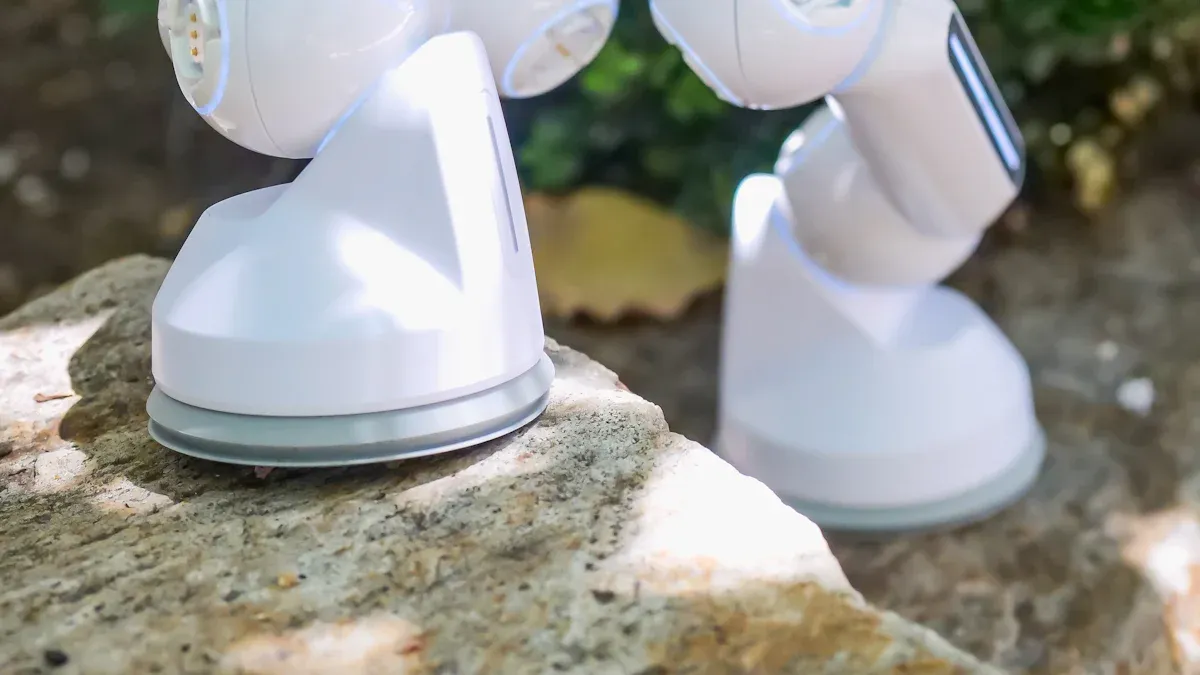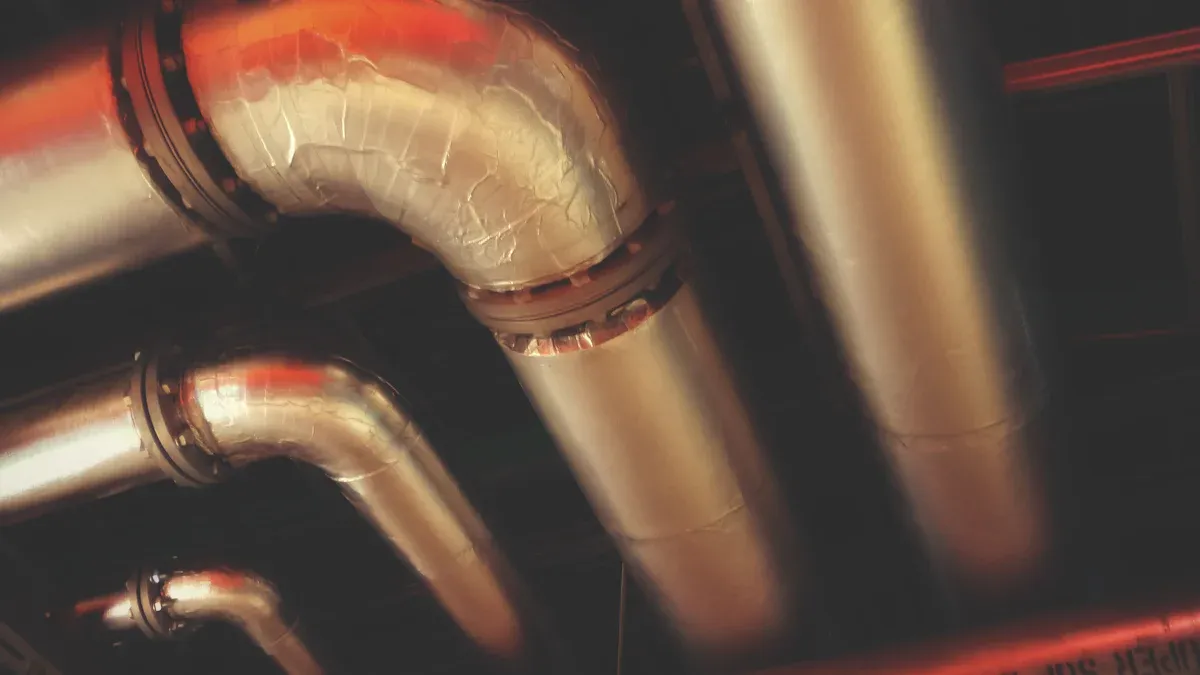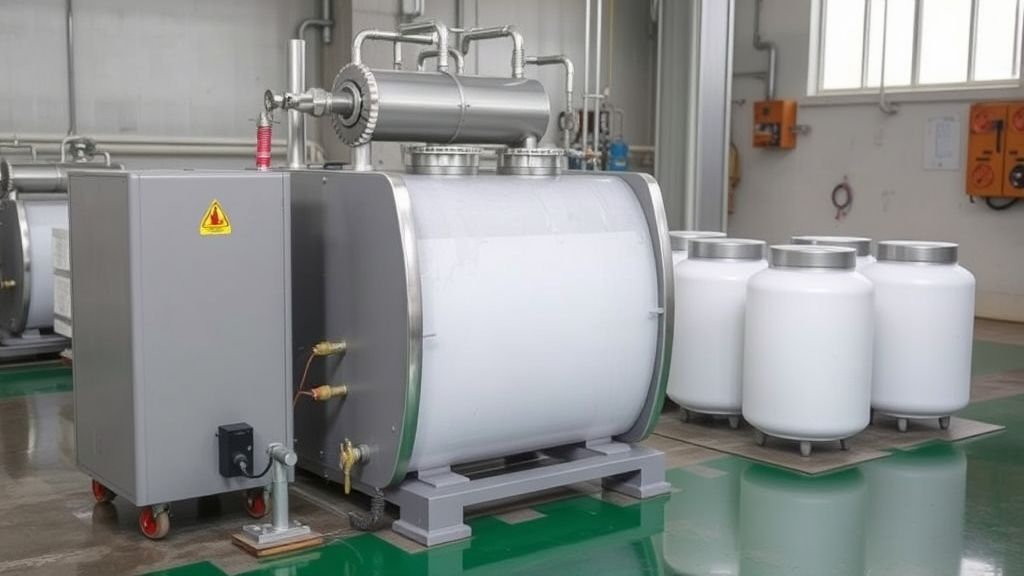Understanding How Nitrogen Generators Operate

Nitrogen generators produce nitrogen gas from ambient air. You can find these devices in various industries, where they play a crucial role. They operate using two main technologies: Pressure Swing Adsorption (PSA) and membrane separation. Understanding these technologies is essential for you to optimize nitrogen generation for your specific needs.
Key Takeaways
Nitrogen generators make nitrogen gas from the air around us. This gas is important for industries like food, healthcare, and electronics.
Pressure Swing Adsorption (PSA) technology gives very pure nitrogen. This is great for jobs that need high quality.
Membrane technology is a cheaper and smaller way to make nitrogen. It works well for medium purity needs.
Making nitrogen on-site can save a lot of money. It also makes things safer by removing the need for heavy gas tanks.
Picking the right technology depends on how pure you need the nitrogen, how much you need, and your budget. This helps you get the best nitrogen production.
Overview of Nitrogen Generation
What is Nitrogen?
Nitrogen is a colorless, odorless gas that makes up about 78% of the Earth's atmosphere. It is a vital element for life, playing a crucial role in the formation of amino acids and proteins. In its gaseous form, nitrogen exists as diatomic molecules (N₂). This means that two nitrogen atoms bond together to create a stable molecule.
Importance of Nitrogen in Various Industries
Nitrogen serves many essential functions across different industries. Here are some key applications:
Food Industry: You find nitrogen in flash freezing processes that help maintain food quality and extend shelf life.
Beverage Production: Nitrogen pressurizes draft beer and prevents oxidation in wine-making, ensuring freshness.
Chemical Industry: It creates inert atmospheres in reactors, preventing unwanted reactions that could compromise product quality.
Petroleum Industry: Nitrogen enhances oil recovery and purges pipelines, ensuring safety during operations.
Electronics Manufacturing: It purges moisture and oxygen, preventing contamination in sensitive electronic components.
Metal Processing: Nitrogen maintains controlled atmospheres during heat treatment and laser cutting, improving product integrity.
Healthcare: You can find nitrogen in cryogenic storage and in creating inert environments for pharmaceuticals.
Automotive Industry: It helps maintain tire pressure, which improves fuel efficiency and safety.
Environmental Applications: Nitrogen plays a role in oil spill cleanup and fire suppression systems.
To generate high purity nitrogen, industries often rely on nitrogen generators. These devices can produce nitrogen gas on-site, ensuring a steady supply tailored to specific needs.
Method | Description | Efficiency/Notes |
|---|---|---|
Pressure Swing Adsorption | Uses adsorbent materials to separate nitrogen from other gases. | Produces high-purity nitrogen but requires complex operation and maintenance. |
Membrane Separation | Utilizes semi-permeable membranes to selectively allow nitrogen to pass. | Cost-effective and easy to use, but may struggle to achieve maximum purity. |
Cryogenic Distillation | Liquefies air and separates nitrogen through distillation. | Highly effective for high-purity nitrogen but has high costs and energy demands. |
Understanding these applications and methods helps you appreciate the significance of nitrogen in various sectors.
PSA Technology

How PSA Nitrogen Generator Works
Pressure Swing Adsorption (PSA) technology is a widely used method for nitrogen generation. This process relies on adsorbents to separate nitrogen gas from other gases in the air. Here’s how it works:
Pressurized Air In: You start by drawing compressed air from the atmosphere into the system.
Absorption of Oxygen: The adsorber captures oxygen, moisture, and carbon dioxide, allowing high purity nitrogen to pass through.
High Purity Nitrogen Out: The system then delivers the nitrogen gas to your application.
Equalization of Pressure: After the adsorption phase, the system equalizes pressure to prepare for the next cycle.
Regenerating Bed Depressurizes: The adsorber depressurizes completely, releasing the oxygen-enriched gas back into the atmosphere.
Waste Gas Exits: Finally, any remaining waste gas exits through a silencer.
Key components of PSA technology include compressed air, adsorbers, and process receivers. These elements work together to ensure a constant flow of nitrogen, even during production fluctuations.
Advantages of PSA Technology
PSA technology offers several significant advantages. First, it consumes low energy while producing high purity nitrogen. This efficiency can lead to cost savings for your operations. Additionally, PSA systems require comparatively low investment and maintenance costs. This aspect enhances the overall profitability of processes like petroleum refining.
Moreover, PSA technology provides better control over gas quality. It is particularly beneficial for industries that need high and consistent purity levels. The reliability of PSA systems also means you can depend on them for steady nitrogen generation without the complexities of traditional liquid gas delivery methods.
Applications of PSA Technology
You can find PSA technology applied in various industries. It plays a crucial role in petroleum refining, where it separates and purifies gases. In these refineries, PSA systems produce low-purity oxygen to enhance combustion air for different operations. This application highlights the importance of PSA technology in maintaining efficiency and safety in refining processes.
Other industries, such as food packaging and electronics manufacturing, also benefit from PSA technology. By generating high purity nitrogen on-site, businesses can ensure product quality and reduce costs associated with gas delivery.
Membrane Technology

How Membrane Technology nitrogen generator Works
Membrane technology utilizes hollow fiber membranes to separate nitrogen from other gases in the air. The process begins with air compression, which propels the air through the membrane system. Pre-treatment of the air is crucial to remove contaminants that could hinder efficiency. As the air passes through the membrane, differences in permeation rates allow nitrogen to selectively pass while oxygen and other gases are retained. This selective permeation is most effective at operating temperatures around 55-60°C.
Advantages of Membrane Technology
Membrane nitrogen generators offer several benefits that make them appealing for various applications:
Cost-Effective: Compared to PSA models, membrane systems are generally more affordable.
Compact Design: Their lightweight and compact nature makes them easy to install in limited spaces.
Low Maintenance: With fewer moving parts, maintenance is straightforward and less frequent.
Continuous Supply: These systems provide a steady flow of nitrogen without the need for regeneration processes.
Energy Efficiency: Membrane technology operates with minimal energy consumption, enhancing overall efficiency.
Applications of Membrane Technology
Membrane technology finds use in numerous industries due to its versatility. Here are some key applications:
Analytical Instrumentation:
Gas Chromatography (GC): Nitrogen serves as a carrier gas for efficient compound separation.
Liquid Chromatography-Mass Spectrometry (LC-MS): It aids in sample ionization as a nebulizing and drying gas.
High-Performance Liquid Chromatography (HPLC): Nitrogen helps degas solvents and maintain a stable mobile phase.
Laboratory Gas Supply:
General Laboratory Use: Creates inert environments for sensitive experiments.
Sample Preparation: Purges and dries samples to eliminate contaminants.
Life Sciences and Biotechnology:
Cell Culture Incubators: Controls atmosphere for optimal cell growth.
Cryopreservation: Stores biological samples at ultra-low temperatures.
Food and Beverage: Extends shelf life by preventing spoilage in packaged goods.
Electronics: Prevents oxidation during the manufacturing of sensitive components.
Pharmaceuticals: Maintains stability and purity of products.
Membrane separation technology is not only efficient but also addresses safety concerns by producing nitrogen on demand. This reduces dependency on external vendors and minimizes gas waste.
Comparative Analysis of PSA and Membrane Technologies
Key Differences
When comparing PSA and membrane technologies, you will notice several key differences that can influence your choice. Membrane nitrogen generators are effective for low-purity applications, typically producing nitrogen at purities between 95% and 99.9%. In contrast, pressure swing absorption technology excels in generating high purity nitrogen, achieving purities around 99.9995%. This makes PSA systems ideal for industries like electronics and chemicals, where high purity is crucial.
Here’s a quick comparison of the two technologies:
Feature | Membrane Technology | PSA Technology |
|---|---|---|
Purity Range | Effective at purities up to 99.9995% | |
Capacity vs. Purity | Capacity reduces significantly as purity requirement increases | Capacity reduces gradually as purity requirement increases |
Feed Air/Operating Cost | Nearly equal efficiency at purities near 95%, but efficiency drops at higher purities | More efficient than membrane technology when nitrogen purity exceeds 95% |
Choosing the Right Technology
Selecting the right nitrogen generation technology depends on your specific needs. Consider the following factors:
Purity Requirements: If you need high purity nitrogen (above 99.9%), PSA systems are your best option. For moderate purity needs, membrane systems may suffice.
Flow Rate: PSA systems work well for high-flow applications, while membrane systems are better suited for low-flow and low-purity applications, such as food packaging.
Cost-Effectiveness: Evaluate the costs associated with each system. PSA systems may have higher initial costs but offer better efficiency for high purity requirements. Membrane systems can be more cost-effective for moderate capacity and purity needs.
Location: In remote areas, you might prefer membrane systems for their simplicity, even if they come with higher operational costs.
By weighing these factors, you can make an informed decision that aligns with your nitrogen production needs.
Nitrogen generators play a vital role in various industrial applications. They provide a reliable source of nitrogen, which is essential for maintaining product quality and operational efficiency. Both PSA and membrane technologies offer unique benefits that cater to different needs.
Consider these advantages:
On-site nitrogen generation can save you nearly $25,000 annually compared to traditional delivery methods.
You gain a constant, on-demand supply of nitrogen, reducing the risk of disruptions.
These systems eliminate the need for handling high-pressure gas cylinders, enhancing safety for your employees.
You can achieve precise control over nitrogen purity, crucial for industries with strict quality requirements.
Additionally, on-site generation reduces carbon emissions associated with transportation.
Understanding these differences helps you make informed decisions for your nitrogen generation needs.
How does a liquid nitrogen generator work

A liquid nitrogen generator produces liquid nitrogen by isolating nitrogen from air and cryogenically cooling it. Key steps:
Compression: Air is compressed and filtered to remove moisture, CO₂, and particulates.
Purification: Further dried and purified via molecular sieves/adsorption systems.
Cryogenic Cooling: Cooled cryogenically (below -196°C) via heat exchangers and turboexpanders, liquefying the air.
Distillation: Separated via fractional distillation in a column, exploiting boiling point differences (−196°C for N₂ vs. −183°C for O₂/Ar). Nitrogen vaporizes first.
Storage: Collected N₂ gas is pressurized and reliquefied, stored in vacuum-insulated Dewars.
Energy-efficient cycles (Claude/Linde) optimize power use through heat recovery, expansion cooling, and phase transitions.
FAQ
What is the main function of a nitrogen generator?
A nitrogen generator separates nitrogen from ambient air, producing high-purity nitrogen gas. You can use this gas in various applications, including food packaging and electronics manufacturing.
How does PSA technology differ from membrane technology?
PSA technology uses adsorbents for gas separation, achieving higher purity levels. Membrane technology relies on semi-permeable membranes, offering lower purity but simpler operation and maintenance.
What are the typical applications of nitrogen generators?
You can find nitrogen generators in industries like food and beverage, pharmaceuticals, and electronics. They help maintain product quality and safety by providing a reliable nitrogen supply.
How do I choose between PSA and membrane technologies?
Consider your purity requirements, flow rate, and budget. PSA suits high-purity needs, while membrane technology works well for moderate purity and lower flow applications.
Are nitrogen generators energy-efficient?
Yes, nitrogen generators are energy-efficient. Both PSA and membrane technologies consume less energy compared to traditional gas delivery methods, reducing operational costs.